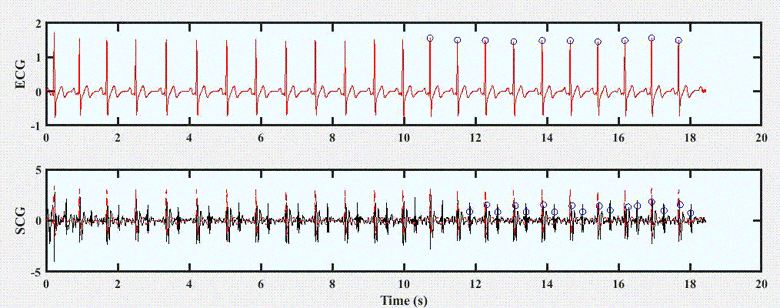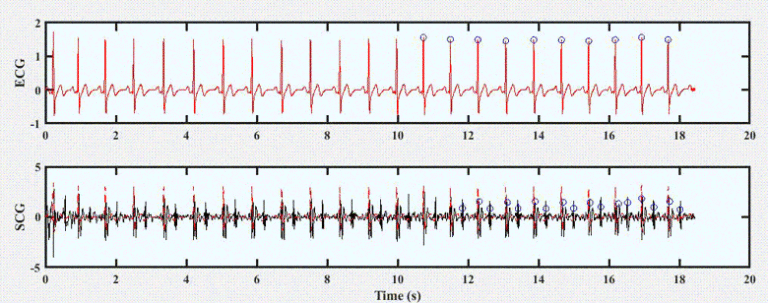Early Access Note:
Early Access articles are new content made available in advance of the final electronic or print versions and result from IEEE’s Preprint or Rapid Post processes. Preprint articles are peer-reviewed but not fully edited. Rapid Post articles are peer-reviewed and edited but not paginated. Both these types of Early Access articles are fully citable from the moment they appear in IEEE Xplore.

Accurate gating for data acquisition of computed tomography (CT) is crucial to obtaining high quality images for diagnosing cardiovascular diseases. To illustrate the feasibility of an optimized cardiac gating strategy, we present a near real-time implementation based on fusing seismocardiography (SCG) and ECG. Methods: The implementation was achieved via integrating commercial hardware and software platforms. Testing was performed on five healthy subjects (age: 24-27; m/f: 4/1) and three cardiac patients (age: 41-71; m/f: 2/1), and compared with baseline quiescence derived from echocardiography. Results: The average latency introduced by computerized processing was 5.1 ms, well within a 100 ms tolerance bounded by data accumulation time for quiescence prediction. The average prediction error associated with conventional ECG-only versus SCG-ECG-based method over all subjects were 59.58 ms and 27.24 ms, respectively. Discussion: The results demonstrate that the multimodal framework can achieve improved quiescence prediction accuracy over the ECG-only-based method in near real-time.

